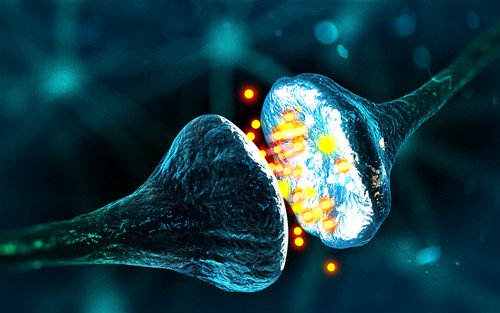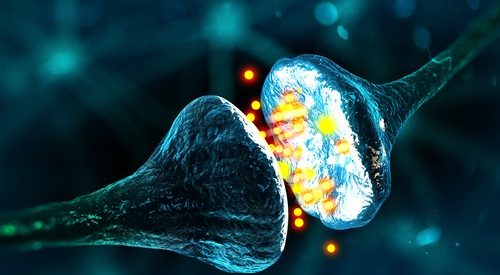Quite curious indeed
 A visualization of neurotransmitters. Source: Thermo Fisher Scientific.
A visualization of neurotransmitters. Source: Thermo Fisher Scientific.
Overview
Neurotransmitters and hormones are two different types of chemicals that carry signals from one part of the body to another. Both chemicals play an important part in the body?s physiology. They control a variety of physical and psychological functions, including our mood, our eating patterns, our ability to learn, and our sleep cycles.
The Differences
Hormones and neurotransmitters are different chemical messengers, the former produced by the endocrine glands and the latter by the nervous system.
Hormones are usually secreted from the endocrine system and released into the bloodstream, but they act on distant target cells. Some hormones, like melatonin and cortisol, are actually produced in the brain, released in the blood, and affect other parts of the body.
On the other hand, neurotransmitters are released from the presynaptic nerve terminal in the brain. They move across the synaptic cleft, a small space between two adjacent neurons, and move to the next neuron (known as a postsynaptic neuron). There they bind to specific receptors, causing changes in the electrical properties of target cells, which can cause various postsynaptic effects. Neurotransmitters work locally and their actions are very fast.
Both hormones and neurotransmitters influence our thoughts and motivations, as well as our ability to learn and concentrate. However, neurotransmitters? actions are short-lived while hormones act for longer periods of time. Furthermore, neurotransmitters can affect both voluntary actions (eating, bathing, walking) and involuntary actions (breathing, blinking). Hormones in the endocrine system always work involuntarily.
Curious Similarities
Research in the last couple of years has demonstrated that some hormones, work like neurotransmitters independently of their classical hormone actions. The most well-studied hormones are progesterone and estrogen, which are known as steroid hormones.
Steroid hormones are typically synthesized in the endocrine gland and bind to a receptor that then binds to a specific DNA sequence, affecting gene transcription. This process is a lengthy one, which means that steroid hormones work for a prolonged period of time.
However, Progesterone and estrogen are also synthesized in the neuronal circuit, specifically in the presynaptic terminal. They then bind to the membrane and intracellular receptors followed by neurotransmitter-like action, which is very fast and short-lived. These neurotransmitters-like steroids have multiple receptors. The steroid-receptor specific functions are not yet clearly understood.
Some well-studied neuroreceptors, like dopamine and serotonin are known to possess hormonal functions. Dopamine is a neurohormone released from the hypothalamus; its main function is to block the release of prolactin, another hormone, from the pituitary gland. As a neurotransmitter released from the central nervous system, it also has many functions including roles in cognition and motor activity.
Adrenaline and noradrenaline are two molecules that differ by one carbon atom. Adrenaline, which is produced by the adrenal gland, acts as a hormone. On the other hand, noradrenaline acts as a neurotransmitter in the central nervous system.
This is just a piece of a growing body of research suggesting that many hormones work as neurotransmitters and vice-versa. The next area of research here is to determine the receptor-specificity of these molecules to understand how their function may change depending on the receptor and mode of binding.
Further Reading
S.F. Owen, et al. (2013). Nature, 500, 458?462.
B.J. Martin, et al. (2015). Nature, 520, 499?504.
Lauren M. Rudolph, et al. (2016). The J. of Neuroscience, 36, 11449?11458.
Balthazart, J. & Ball, G.F. (2006). Trends Neurosci., 29, 241?249.


